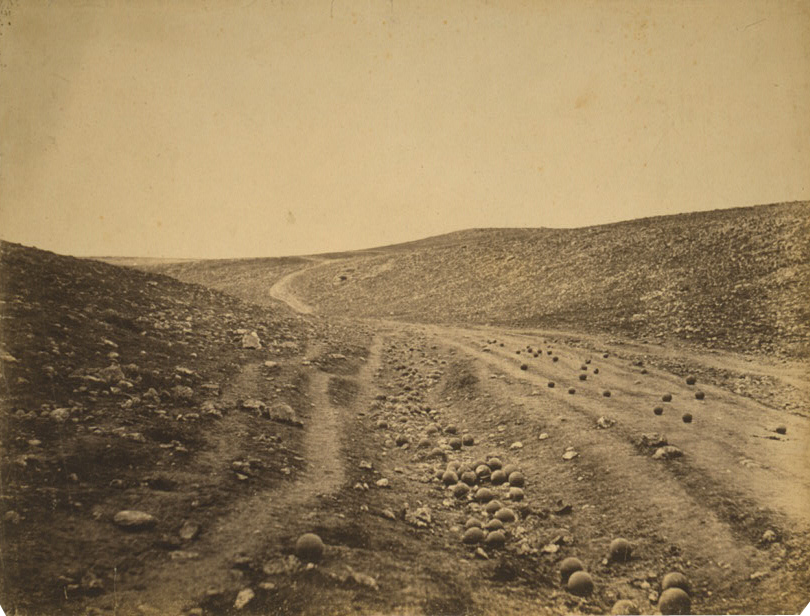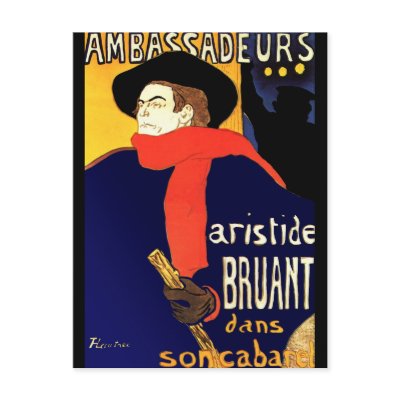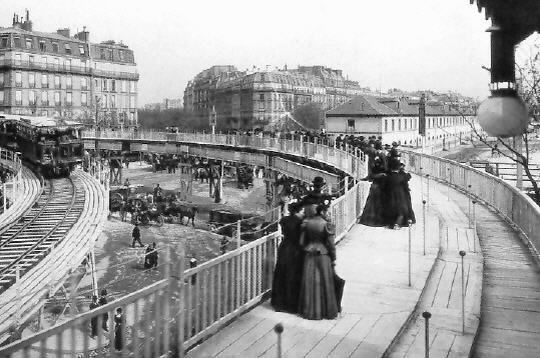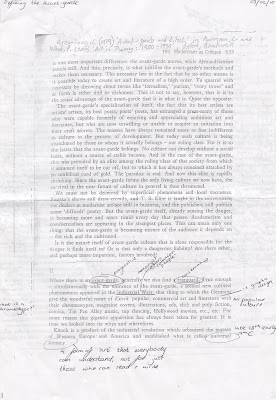Thursday, 3 June 2010
Wednesday, 24 March 2010
Repin


 Repin was a leading Russian painter in the 19th century. His work concentrated quite highly on his country of origin which was the Ukrain. Much of his work portrayed the dedication that he had for his country, often showing realistic paintings of important events such as moments within the Russian revolutionary movement.
Repin was a leading Russian painter in the 19th century. His work concentrated quite highly on his country of origin which was the Ukrain. Much of his work portrayed the dedication that he had for his country, often showing realistic paintings of important events such as moments within the Russian revolutionary movement.Tuesday, 23 March 2010
Norman Rockwell - The Saturday Evening Post cover



Thursday, 7 January 2010
Lecture Five
- James Nachewey - never denies his intervention in the image
- Frances Frith - denied he had any intervention at all
i.e. photographer always influences what they are photographing
- William Edward Kilburn, 'great chartist...' 1848 - no influence, a historical fact - dangerous
Always have a reason for taking a photo even neutral photos - Roger Fenton,1855, 'Into the valley...' - title makes you view the photo differently
- Roger Fenton,1855, 'Into the valley...' - title makes you view the photo differently
'photograph achieves at its highest distinction, reflecting the universality of the human condition in a never to be retrieved fraction of a second'- Henri Cartier Bresson France 1932
but
It is still influenced by the photographers eye
- Jacob Riis, 1888, bandits roast- all are aware of photographer- obvious construction
1887, 'a growler gang in session (robbing a lush)' all quite obviously staged
- Lewis Hine, Russian steel workers, Honestead, Pa, 1908 'child labourers in glass works, indiana'
FSA photgraphers, 1935- 44
- Director Roy Stryker
- Depression 11million unemployed
- Mass migration of farm labourers (oakies)
- The photograph as both photojournalism and emotive lobbying tool
- Included shooting scripts
- Margaret Bourke-White, 'Sharecroppers Home' 1937 - images of ads vs poor child
- Russel Lee ' Interior of a black farmers house' 1939
 - Dorothea Lange, 1936, 'Migrant mother' compared to Raphael 'Mother and child'
- Dorothea Lange, 1936, 'Migrant mother' compared to Raphael 'Mother and child'- Walker Evans
- Robert Frank
- John Lamprey
- Carl Damman
- Cesare Lombroso ' portrait of melancholy' 1890
War/conflict photography
- Robert Capa 'Normandy, France' 1945
- Magnum group, founded in 1947, documenting times of historical importance all around the world
 - Nick Ut, 1972, 'Accidental Napalm Attack'
- Nick Ut, 1972, 'Accidental Napalm Attack'- Don McCullin, 1968, 'shell shocked soldier'
- Robert Haeberle, 1969
- Willia Klein
- Bernd and Hilla Becher
Conceptual Art
- Richard Long
- Vito
Critical Realism
- Bertolt Brechtt, 1931
- Allan Sekula, 'fish story'
vs
- Andreas Gursky
- Jeff Wall
- Gillian Wearing, signs that say what you want them to say', 1922 - 1993
- Jeremy Deller, 'The battle of Orgreave' 2001
Lecture Four

- Warhol
Marilyns (1962) - uses 'anti art' colours, shown as mask like representation - opposite to true life where in fact she was a depressant drug addict.
-Repition of images in mass media desensitises us
- 'High and Low Culture' (high art and low art)
- When artists work is used in mass media it often benefits both sides - artis benefits from media etc (such as pears soap ad)
 - Myra Hindley Painting (Marcus Hardy) caused high media histeria - painting possibly so famous because of mass media. Without the mass media she would have been forgotton like so many other criminals
- Myra Hindley Painting (Marcus Hardy) caused high media histeria - painting possibly so famous because of mass media. Without the mass media she would have been forgotton like so many other criminalsConclusions
1. New media is changing the way we consume and read text and images
2. Theorists of the mass media have different viewpoints seeing it either as
a) negative and a threat
OR
b) positive, pleasurable and democratic
Lecture Three
25th November
- Time Square, New York
 Prime example of mass advertising
Prime example of mass advertising
- Mass advertising - invades life/consciousness, people no longer have a choice but to view the ads as they are so in your face i.e. bill boards, tv ads, pop up ads etc
- Karl Marx 1818-1883 - 'Communist Manifesto' 1848, 'Das Kapital' 1867 (volume one)
- Critique of consumer/ commodity culture
In commodity culture we construct identities through the consumer products that inhabit our lives. This is what Stewart Ewan terms as 'the commodity self
- Judith Williamson author of decoding advertising
- Instead of being identified by what they produce, people identify themselves through what they consume i.e. symbolic associations (eg aftershave to sex appeal) trick consumer into believing (eg you will be more sex appealing if you wear this aftershave)
How does commodity culture perpetuate false needs?
- aesthetic innovation
- planned obsolence
- novelty (make us believe things that are untrue)
- (consider a level product design, something new and better i.e vinyls to cassettes to cd's to mp3's)
Commodity Fetishism
- Basically, advertising conceals the background 'history' of products. In other words the context in which a product is produced is kept hidden
Reification
- Products are givenhuman associations
- Products themselves are percieved as sexy, romantic, cool, sophistcatedm fun etc
- Frankfurt school (set up i 1923)
- Herbert Marcuse author of One Dimensional Man, 1964
- Seeks to make people unhappy with existing material possesions (i.e. the car i have isnt good enough), and potentially manipulates people into buying products that they don't need and don't even really want. Also encourages an addiction.
- Also encourages consumers, especially children, to want products and brands that they cannot afford, causing feelings of inadequacy and envy
- Victor Burgin
Lecture Two

Edouard Manet (1832 - 83). A bar at the Folies Bergeres. 1882
Henri de Toulouse-Lautrec, Aristide Bruant, 1893, poster
Alphonse Mucha, Job, 1898, poster for cigarette papers
Wallisy Kandinsky (1886- 1944), Composition VIII, 1923
Lecture One
11th November
-1760-1960 - modernism?
Present - Post modernism
- Modernise - to make better
-Modern but not modernist
- 1900 Paris was the worlds most modern city

Trottoir Roullant (moving sidewalk) in Paris 1900. A three tiered sidewalk, one level stationary, the seond moved at 4km per hour and the third at 9km per hour
- Urbanisation - from country to city- changed from working the land to city working
- The discovery of the railway meant that world time became standardised i.e GMT
- Enlightenment = period in late 18th century when scientific/philosophical thinking made leaps and bounds. People began to embrace the modern, and tradition and religious spookery shifted for modernism. Secularisation
- Haussmanisation - saw a 'revived' Paris from 1850's onwards when old Paris was knocked down and rebuilt by Haussman in order to hold modernity
- Keiserpanorama - 1883
- Eadweard Muybridge
- Marchel Duchump
- Modernism in design
anti-historicism
truth to materials
form follows function
technology
internationalism
Wednesday, 6 January 2010
Library resources for essay- preliminary bibliography
- Bullmore, J. (2003): ‘Behind the scenes in advertising (mark III)’. World Advertising Research Center; 3 edition
All library references are as below:
-Advertising: principles and practice. / Mitchell, Nancy , Wells, William & Moriarty, Sandra (2008) 659.1
-The advertising and consumer culture reader. / McAllister, Matthew & Turow, Joseph (2009) 659.1
-Advertising and society: controversies and consequences. / Pardun, Carol (2008) 659.1
-The theory of advertising: a simple exposition of the principles of psychology. / Scott, William Dill (2009) 659.101
-Persuasive advertising. / Armstrong, Scott (2009)
-Subliminal seduction: ad media's manipulation of a not so innocent America. (1981) 659.101
-Ad women: how they impact what we need, want and buy. / Sivulka, Juliann (2008) 659.1
-Advertising ethics. / Van Heekeren, Brent & Spence, Edward (2004) 659.101
-Persuasion in advertising. / O'Shaughnessy, Nicholas & O'Shaughnessy, John (2003) 659.101
-How advertising works. / McDonald, Colin (1993) 659.1
-Great expectorations: advertising and the tobacco industry. / Chapman, Simon (1986) 659.1
-Advertising: new techniques for visual seduction. / Stoklossa, Uwe & Rempen, Thomas (ed.) (2007) 659.1
-The hidden power of advertising: how low involvement processing influences the way we choose brands. / Heath, Robert (2001) 659.1
-The manipulators: unmasking the hidden persuaders. / Robinson, Jeffrey. (1998) 659.1
-Influence: the psychology of persuasion. / Cialdini, Robert (1993) 659.1
-Age of propaganda: the everyday use and abuse of persuasion. / Pratkanis, Antony & Aronson, Elliot (2001) 659.1
-United colours: the Benetton campaigns. / Savemini, Lorella Pagnucco (2002) 741.67
-Emotion as promotion: a book of thirst. / Valicenti, Rick (2005) 741.6 THI
-Visual consumption. / Schroeder, Jonathan (2002) 658.8
Other works of Jeremy Bullmore:
-Behind the scenes in advertising (mark III). / Bullmore, Jeremy (2003) 659.1
-Behind the scenes in advertising (mark III). / Bullmore, Jeremy (1998) 659.1
-Behind the scenes in advertising. / Bullmore, Jeremy (1998) 659.1
Essay notes
“Advertising doesn’t sell things; all advertising does is change the way people think or feel” Jeremy Bullmore. Evaluate this statement with reference to delected theories and advertisements (past and present).
-Cigarette advertising – attatches to social issues – marlboro, bennetton
-Advertising mobile phone networks, they cannot be seen nor touched, therefore companies tend to advertise a feeling or an idea
-All advertising is, is persuasion in a visual/verbal form
-Perfume ads tend to show quite obviously an individual emotion caused by the effects of use of the product. – how else would it really be possible to advertise products like these (also mobile networks). And are there any that stand out from the stereotypical ad?
-Any ads that attatch themselves to recent social issues i.e. 7/11 bombings, flooding, fashion, trends – and aren’t all ads just extensions of new fads?
-Emotion portrayed through music/images i.e. animal/child cruelty ads – make us feel bad to try get us to donate – often these ads are turned off as soon as the viewer see’s them as they are too emotional (who wants to be put down in their own home? We avoid them in the street) – too far?
Portfolio Task Two
 Summarise the text Harrison, C and Wood, P. (eds.) (1997) 'Art In Theory: 1900-90', Oxford, Blackwell, pp. 125-9.
Summarise the text Harrison, C and Wood, P. (eds.) (1997) 'Art In Theory: 1900-90', Oxford, Blackwell, pp. 125-9.Write no more than a few paragraphs but try to include what you see as the five key points that the authors are trying to communicate about Modernity and various Modernists subsequent responses to the condition of Modernity.
Include a bibliographic Harvard reference for the text at the end.
-the avant-garde
-new art (modernism)
-the competition throughout Europe to lead the modernist front
-how the modern condition was taken, against and for
-the third response to modernization
The boundaries of the 'norm' were pushed by the 'new art', the avant-gard artists believed that this new art had its own guise developed from the elements of the well loved late nineteenth century work. They believed that this work should not completely afflict the traditional style but yet work alongside it to create the respect and love that the original work had created.
After the world war had broke out the avant-gard was known widely and competition was already being built between capitals 'within a German philosophical and cultural tradition...never to have been far below the surface of French art', and also 'modernization in Italy and Russia' shows that there was constantly a comparison between cultures to lead this new movement.
'But it was also a form of effect on the person: a character these changes and adaptations gave one' tells of a character that was given to this new art movement, it was described not as a movement in itself but more of an experience, and awareness of the change that was taking place. Many welcomed this change, believing that the movement brought freedom and a new life with its new technologies, but on the other hand many believed the modernism represented an 'iron cage' alongside a feeling of alienation and even panic amongst many.
Alongside the two is positioned a third response which was also felt toward the modernism. 'The variant responses of depression and exhilaration are two sides of the same coin' is a phrase from the text which seems to stand out quite highly to me, particularly in summary of the third response, which believed that the modern world is at it is, and viewed from the third point modernization is simply not just a technological fact, but primarily a social fact and represents new relations between various people from different cultures, ethics and classes. Therefore believed that modernization is bringing the world together afar from tearing it apart.
Harrison, C and Wood, P. (eds.) (1997) 'Art In Theory: 1900-90', Oxford, Blackwell, pp. 125-9.








